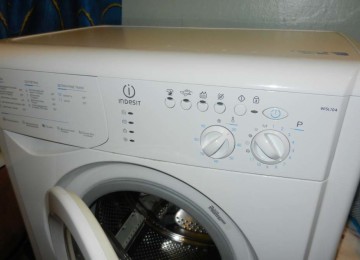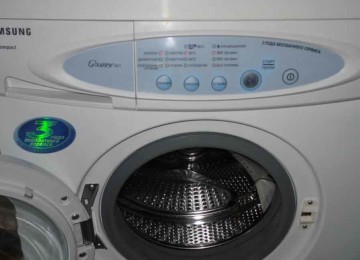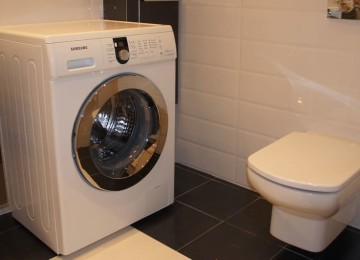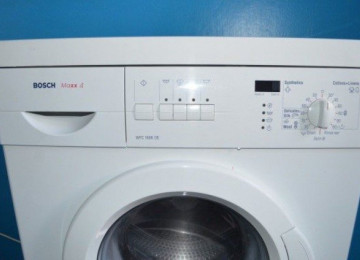 When purchasing a unit for washing clothes, the buyer most often pays special attention to the method of loading the laundry, the washing class, the material from which the drum is made, and its capacity. However, one should not forget about an important element called the engine. The main parameter that is definitely specified when purchasing is the power of the washing machine motor.
When purchasing a unit for washing clothes, the buyer most often pays special attention to the method of loading the laundry, the washing class, the material from which the drum is made, and its capacity. However, one should not forget about an important element called the engine. The main parameter that is definitely specified when purchasing is the power of the washing machine motor.
Types of electric motors
The washing machine motor converts electrical energy into mechanical energy, causing the drum to rotate. There are three types of motors for automatic washing machines:
- asynchronous motors - there are two- and three-phase. The power of such motors for washing machines reaches 180 - 360 W, their speed is not too high - up to 2,800 per minute during the spin process and about 300 during the washing process;
- commutator motors - can operate not only from direct, but also from alternating current. They are small in size and the engine speed can be adjusted electronically. The main disadvantage is the brushes, which wear out during use and have to be changed periodically. The power of the commutator motor reaches 380 - 800 W, the armature rotates at a frequency of 11,500 - 15,000 revolutions per minute;
- brushless - they are also called inverter.Such motors first became known in 2005, when Lg began installing them on its laundry washing machines. The main difference is that a belt drive is not required to connect the motor and the drum, everything happens directly. This type of engine is the most compact, structurally simple, and has the highest efficiency. The power of such electric engines are not inferior to the above samples, the number of revolutions in the process of squeezing clothes is 1,600 - 2,000 per minute.
How energy consumption depends on the motor power value
To simplify the issue, let’s figure out how much electricity in kilowatts the motor of your washing mashine can generate in an hour of operation. This data interests us more often, but what exactly is the power of the engine itself is a second question.
It is believed that the energy consumption of a device for washing clothes is formed from:
- electricity consumed by the motor, which during operation can change depending on the operations performed;
- values of a water heating device, the average of which is 1.7 - 2.9 kW. And the amount of energy consumed will depend on the set water temperature;
- the pump power is 24 0 40 W, which is quite enough to drain the liquid;
- the total power value of the light bulbs, module, sensor devices, which reaches 5 - 10 W.
The power consumption of the washing machine is determined by the “cotton” mode, during activation of which the water temperature is sixty degrees and the drum is loaded to its maximum. Based on this indicator, the machine is assigned an energy efficiency level, which is denoted by letters of the Latin alphabet.
The power of the engine will determine how many revolutions the drum will make per spin. This number is reflected in the SMA spin class. Machines whose motor power regulator allows them to perform 1,600 revolutions per minute belong to group “A”. But this does not mean that you should purchase just such options - even at a mode of 1,000 revolutions, the laundry will be spun perfectly.
Engine power of various SMA models
Washing machines from different manufacturers are equipped with electric motors that differ not only in cost, but also in technical parameters. Here are the main devices:
- MOTOR CESET MCA 52/64-148/AD9 – such engines are installed on Indesit and Hotpoint-Ariston machines, their power level at 11,500 rpm reaches 430 W;

- MOTOR CESET MCA38/64-148/CY15 – motors for units from Kandy, Zerovatt and Hoover companies. At 360 W they produce 13,000 rpm;
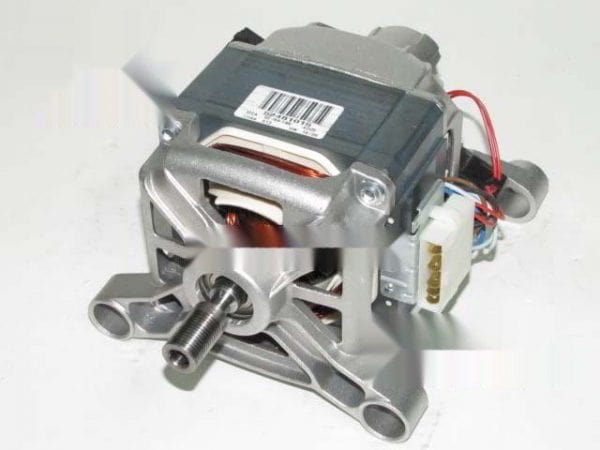
- MOTOR CESET CIM2/55-132/WHE1 – electric motors of this series can be found on washing units with a power rating of 800 W and a speed of 17,000. Examples of devices are Whirlpool and Bauknecht;
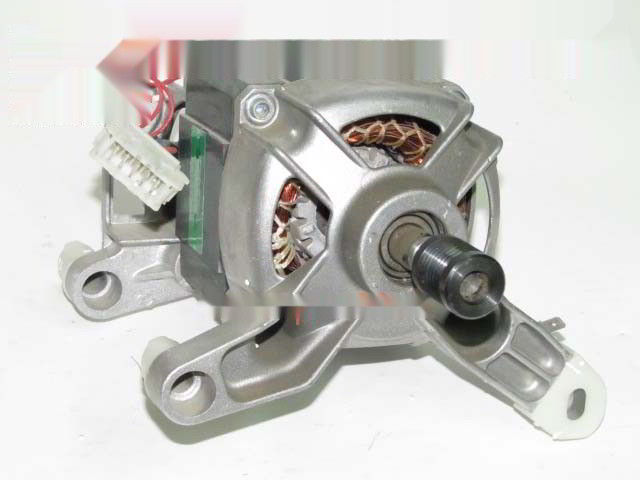
- WELLING HXGP2I.05 WASHING – another engine option for Indesit, also found on Vestel. When spinning, the power is 300 W, during washing it decreases tenfold;
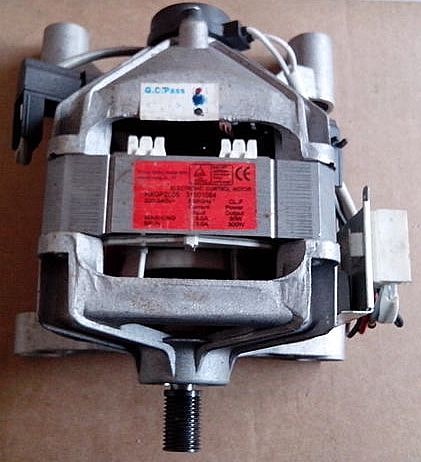
- Elecronic Control Motor Haier HCD63/39 - this motor can be seen on Kandy or Haier; its power rating is 220 W, speed is 13,000;
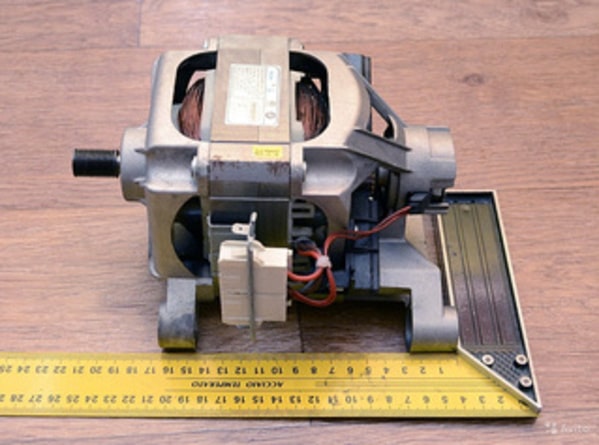
- HXGP2I Welling Electronic Control Motor - motors of this brand are installed on devices for washing clothes from Samsung and Ardo, their power does not exceed 300 W.
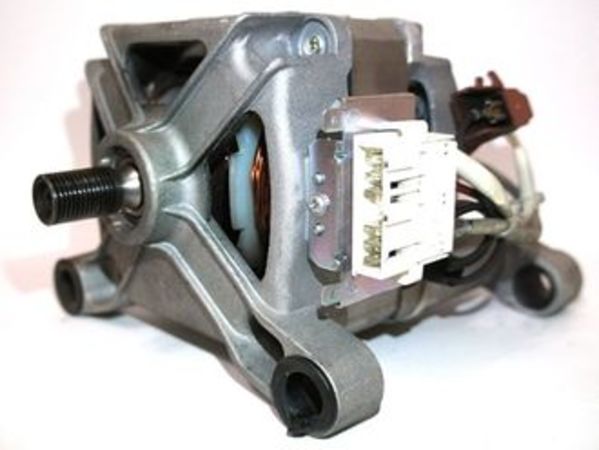
Many people are interested in whether it is possible to make adjustments on modern engines, and how to increase the power of the unit? How to lower the speed so as not to disrupt performance? In this case, it is necessary to connect a tachogenerator, which transmits the number of turns to the microcircuit of the regulatory device, which coordinates the entire process through a thermistor.
Conclusion
Today, two-phase electric motors are not used in SMA. Similar motors were installed on older washing machines - Malyutka, Fairy, Riga, Vyatka. The Siberia washing machine also falls into this category. Many of them also installed single-phase AER 16 motors, which had proven themselves successfully until the early 2000s.






